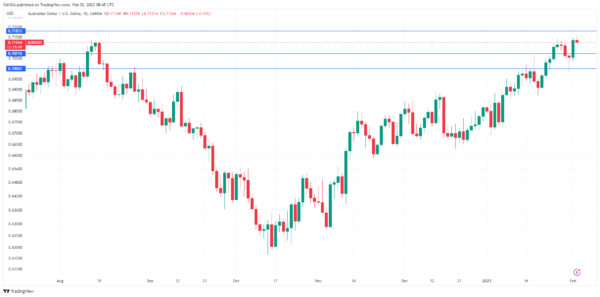After a sluggish start to the week, AUD/USD bounced back on Wednesday with gains of 1.18%. The pair has edged lower on Thursday and is trading at 0.7137 in the European session.
Powell sends US dollar lower
The Federal Reserve raised rates by 25 basis points at the Wednesday meeting, as expected. The Fed noted that inflation has eased but reminded listeners that it remained much higher than the 2% target. Jerome Powell signaled that more rate hikes are coming and said he did not expect to cut rates this year. Sounds hawkish, right? Well, the US dollar initially recorded gains but headed lower after Powell acknowledged that the disinflation process had begun, which was sweet music to the ears of the financial markets. The result was a dovish hike and the Australian dollar surged against its US counterpart. The US dollar index is in retreat and has fallen to 100.99.
There are two more inflation reports ahead of the Mar. 22 meeting and if they show inflation continues to fall, the Fed could wrap up the current rate-tightening cycle at that meeting. Besides inflation, the Fed is focused on employment data, which will make Friday’s nonfarm employment report an important factor in the Fed’s rate plans. In December, nonfarm payrolls fell from 256,000 to 223,000 and the downturn is expected to continue, with an estimate of 190,000 for January.
The Reserve Bank of Australia meets next week and is expected to deliver a modest 25-basis point hike. The cash rate is currently at 3.10% and the markets are estimating that the peak rate will rise to somewhere between 3.6%-3.85%. This means that more hikes are on the way after February, but the pace of the rates will be data-dependent, especially on inflation reports.
AUD/USD Technical
- AUD/USD faces resistance at 0.7181 and 0.7282
- 0.7071 has switched to support, followed by 0.7000












